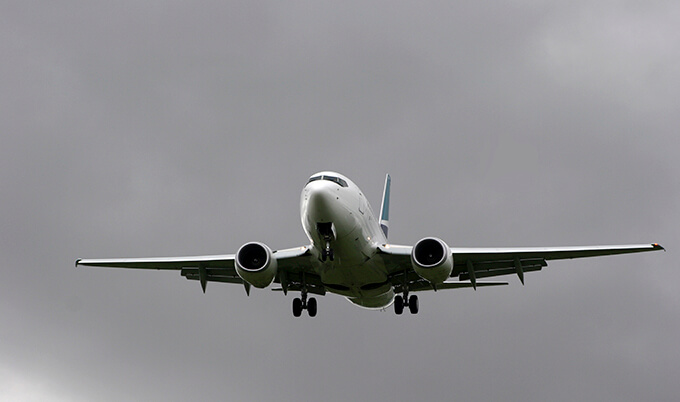European airport trade body, ACI EUROPE, today released its air traffic report for June, Q2 & H1 2021, as well as preliminary data for the month of July.
The report reveals the continued devastating impact of the COVID-19 pandemic, with passenger traffic decreasing by -76.9% across the European airport network during the first half of the year compared to the pre-pandemic reference period (H1 2019).
When compared to 2020, Europe’s airports saw passenger traffic decreasing by –36.2% (H1 2020 vs. H1 2019 stood at -64.2%).
Olivier Jankovec, Director General of ACI EUROPE said: “For Europe’s airports, the first 6 months of 2021 were actually worse than last year, as passenger volumes further decreased by more than a third.
“This is the direct result of the travel restrictions reinstated by European States at the beginning of the year and which remained in place throughout Spring as the continent was hit by the third wave of the pandemic.
“But while the impact was felt by all airports across the continent, it is those located in the EU+ area that were by far the most impacted, while those located in the rest of Europe were beginning to recover traffic by Q2.”
EU+ MARKET TRAFFIC SLUMP TWICE THAT OF THE REST OF EUROPE IN H1
Airports in the EU+ market (EU/EEA/Switzerland/UK) significantly underperformed the H1 European average, with passenger traffic down by -84.1% compared to H1 2019 – and further decreasing by -54.6% compared to H1 2020.
Airports in Ireland (-93.5%), the UK (-92.9%), Finland (-92.1%) and Hungary (-91.9%) recorded the worst performances, due to especially harsh and often disproportionate travel restrictions. At the other end of the spectrum, airports in Romania (-71.7%), Bulgaria (-73.6%), Greece (-76.9%) and Spain (-78.8%) posted the “lowest” decreases in passenger traffic.
Conversely, passenger traffic at airports in the rest of Europe (non-EU+) fared much better, decreasing by -42.9% compared to H1 2019 – and actually increasing by +36.% compared to H1 2020.
This reflected less severe & shorter travel restrictions as well as larger and more resilient domestic markets. While domestic passenger traffic fell by -68.6% at EU+ airports compared to H1 2019, it decreased by only –17.3% in the rest of Europe – and was actually above pre-pandemic levels by June (+8.6%).
During H1, the best overall passenger traffic results came from airports in Russia (-27.2%), Kosovo (-32%), Uzbekistan (-41.8%), Ukraine (-47.6%) and Turkey (-59.7%).
TOP 5 ALL RUSSIAN & TURKISH
The disparity between the EU+ market and the rest of Europe resulted in the 5 busiest European airports in the first half of the year all coming from Russia and Turkey – with Istanbul (-62.5%) in the top position, followed by Moscow-Sheremetyevo (-51.4%), Moscow-Domodedovo (-14%), Istanbul-Sabiha Gokçen (-47.1%) and Moscow-Vnukovo (-25.9%).
HUBS & LARGER AIRPORTS UNDERPERFORMING
Passenger traffic at Europe’s Majors1 significantly underperformed in H1 2021 compared to pre-pandemic (H1 2019) at -80.2% – with London-Heathrow (-90.1%) going from being the busiest European airport in H1 2019 to the 14th position in the first half of this year.
Meanwhile, Paris-CDG (-81.8%) ranked 7th (2nd in H1 2019), Frankfurt (-80.7%) ranked 9th (3nd in H1 2019) and Amsterdam-Schiphol (83.8%) ranked 10th (4th in H1 2019).
Along with the Majors, other EU+ large airports and in particular hubs also underperformed the European average in H1 due to bans and other harsh restrictions on non-essential travel outside Europe.
This was in particular the case of Dublin (-93.1%, ranking 48th down from 15th in H1 2019), Copenhagen (-90.4%, 38th down from 19th), Stockholm-Arlanda (-87.2%, 34th down from 27th), Vienna (-86.6%, 26th down from 17th), Zurich (-86%, 25th down from 16th), Munich (-90.3%, 23nd position from 8th) and Rome-Fiumicino (-86.2%, 18th position down from 10th).
Regional airports (less than 10 million passengers/annum without capital airports) performed comparatively better at –75% – due to their exclusive reliance on intra-European traffic.
Those with even larger exposures to domestic traffic tended to post better results, especially when located on islands or remote areas with no or limited alternative transport modes.
This is reflected in the performance of Sochi (+65.2% – ranking 11th, up from 87th), La Gomera (-6.1%), Hammerfest (-12.2%), Bastfjord (-19.7%), Samarkand (-27.7%), Kharkiv (-26.7%), Bastia (-37.2%), Ajaccio (-42.6%), Trabzon (-49.6%), Kristiansund (-49.5%), Tenerife (-52.9%), Porto Santo (54.5%), Bodo (-58.5%) and Brest (-65.3%).
TRAFFIC IMPROVEMENT FINALLY GAINING MOMENTUM IN JULY & INTO AUGUST
Preliminary data for July reveals a decrease in passenger traffic of -51% across the European airport network compared to the same month pre-pandemic (2019), but with total passenger volumes more than doubling compared to July 2020 – from 57.4 million to 127.4 million.
Jankovec concluded: “The situation is gradually improving for airports, but make no mistake – 2021 is not going to be the year of our recovery – far from it.
“Europe’s airports have already lost over 1 billion passengers this year2 – which is more than was lost last year to date.
“The revenue levels needed to sustain our operations are still not there, with debt mostly ensuring we keep operating.
“The outlook beyond the peak Summer months remains uncertain, and is dependent on further progress with vaccination both in Europe and globally.
“Crucially, it is dependent on more Governments allowing and effectively facilitating travel on that basis. Our eyes are especially on the US market, which remains closed to European travellers, increasing the level of frustration on both sides of the Atlantic with each day.”



